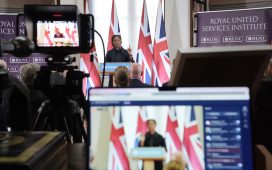Well that didn’t take long. Less than a month after becoming chancellor Rachel Reeves has gone native at the Treasury, putting a red pencil to plans for new hospitals, roads and rail projects that the government says it can’t afford.
The latest to bite the dust is the £800m for an exascale supercomputer at the University of Edinburgh and a further £500m for the AI Research Resource, which funds computing power for AI.
This is beyond depressing. Britain is good at cutting edge science and is third only to the US and China when it comes to the development of AI. We are talking here about the growth industries of the future and if Labour wants the UK to break out of its low-productivity trap – as it claims it does – then these are precisely the sorts of initiatives that should be backed rather than canned.
However Reeves seeks to dress it up, her cuts to investment spending are in direct conflict with the government’s aim of improving the economy’s growth performance. It is austerity by any other name.
Reeves says “if we can’t afford it, we can’t do it”, making it clear that as far as she is concerned that is the end of the matter. Her definition of what can and can’t be afforded is determined by whether or not arbitrary rules governing the conduct of the state’s finances are met or not.
In essence, there are two main rules: that debt should be falling as a percentage of national income between the fourth and fifth year according to forecasts from the Office for Budget Responsibility. The second is that the government’s spending should not exceed its revenue by more than 3% of GDP five years ahead.
Taken together, the rules favour short-term decisions over longer-term assessments of what might be good for the economy, and make no distinction between capital spending and current spending on the day-to-day running of the state. It is a lot easier to scrap future investment spending than it is to cut current spending, which is why chancellors – Reeves being the latest – invariably go for that option.
Let’s be clear. There is nothing stopping the government finding £1.3bn for a new supercomputer and AI research, just as it is perfectly feasible to abolish the two-child benefit limit and to raise the social care cap. It could even do so without changing the fiscal rules provided it is prepared to stop paying banks interest in full on the balances they hold at the Bank of England.
Here’s what going on. Since 2006, the Bank of England has paid interest on the reserve balances of commercial banks as a way of setting interest rates for the whole economy. The idea is that the banks won’t be inclined to lend to their customers at a lower rate of interest than they get from the Bank of England.
Initially, this had little impact because the reserve balances of the commercial banks were small. But the balances ballooned as a result of two big waves of bond-buying by the Bank of England, firstly during the global financial crisis of 2008-09 and again in response to the Covid-19 pandemic in 2020. Under these two bouts of quantitative easing, totalling almost £900bn, the Bank of England bought bonds from the banks in return for cash. This cash was parked at the Bank of England.
For more than a decade, the potential costs of remunerating reserves were hidden by low interest rates. Official borrowing costs were reduced to 0.5% in early 2009 and stayed pretty much at that level for the next 12 years. For a £2.5tn economy, paying £4bn-5bn a year interest on the commercial banks reserves was chicken feed.
But as the economist Gerry Holtham pointed out in 2021, it would be a different story if, for any reason, the Bank of England found it necessary to raise interest rates back to more normal levels.
after newsletter promotion
This is, of course, precisely what happened. Between December 2021 and August 2023 the Bank of England raised interest rates 14 times, taking them to 5.25%. Threadneedle Street is now paying 5% interest on £700bn of bank reserves at cost to the exchequer of £35bn a year.
Holtham and others – including Paul Tucker, a former deputy governor at the Bank of England – say it is not necessary to continue bunging the banks such a massive subsidy. Interest rates could still be controlled by remunerating a fraction of the reserves of the commercial banks.
For example, if Reeves decided to pay interest on only one-third of the reserves it would save her just over £22bn a year and fill the “black hole” in the government’s finances without the need for spending cuts or tax rises. She could also reduce the national debt by about £400bn at a stroke.
Other central banks – including the European Central Bank and the Bank of Japan – operate a system of tiered rates so it is perfectly feasible for the Bank of England to do the same.
Labour’s fear of upsetting the City of London – heightened by the punishment meted out by the financial markets to Liz Truss during her ill-fated premiership – means the banks are likely to continue to get their colossal handouts from the taxpayer. Reeves would have to face down criticism that she was imposing a tax on the banks by the back door which the banks would claw back from their customers.
This is not the easiest thing in the world for an incoming Labour government to do. But if the choice is between paying the banks 5% interest on their Bank of England current accounts or investing in the future it really should be no contest.









